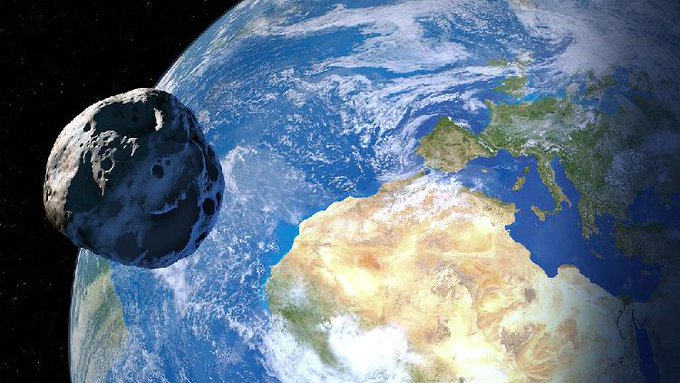The asteroid 2024 PT5, a school-bus-sized “mini moon” that has been orbiting Earth, is set to make its final pass before disappearing from our orbit for the next 30 years. The asteroid, which was first spotted in August 2024, is expected to head toward the sun and won’t return until 2055.
While never visible to the naked eye, 2024 PT5 has been a distant companion to Earth. Scientists speculate it could be a fragment of the moon, though this remains uncertain.

The asteroid will make its closest approach to Earth in January 2025, coming within 1.1 million miles of our planet. After this pass, it will be pulled deeper into space by the sun’s gravity.
NASA has been closely tracking the asteroid’s trajectory, with scientists predicting it will accelerate significantly as it gets closer to the sun, further altering its path and removing it from Earth’s orbit for decades.
While 2024 PT5’s departure marks the end of its near-Earth journey, scientists will continue to monitor its movement in the years ahead.
Earth’s Mini Moon: The Asteroid 2024 PT5
Earth has a “mini moon” — a small asteroid that has been orbiting our planet, occasionally coming into close proximity before disappearing into space. Known as 2024 PT5, this mini moon is a school-bus-sized asteroid that was first spotted by astronomers in August 2024. While it’s not large enough to be seen with the naked eye, it has been a fascinating object for scientists to observe as it orbits Earth.
Unlike the moon, which is Earth’s permanent satellite, 2024 PT5 is an asteroid that temporarily finds itself in Earth’s gravitational influence. Some scientists believe it may even be a fragment of the moon or another celestial body, though its origins remain uncertain. Whether it’s a piece of the moon or simply a passing asteroid, it has become an intriguing object of study for astronomers.
The asteroid’s orbit brings it relatively close to Earth, but it has never been a visible object in the night sky. As it moves through space, it remains far enough away that it doesn’t pose any risk to our planet. Its closest approach will come in January 2025, when it will pass within 1.1 million miles of Earth — a relatively close distance in astronomical terms, but still far enough to ensure that it won’t impact our planet.
After its closest approach, 2024 PT5 will continue on its journey toward the sun, pulled deeper into space by the sun’s gravity. This will mark the end of its brief orbit around Earth, and it will be invisible to us for the next 30 years. According to NASA, once the asteroid passes near the sun, its speed will increase dramatically, and it will be flung into a new trajectory, moving further away from Earth.
NASA and other space agencies have been carefully tracking the path of 2024 PT5 since it was first discovered, using advanced telescopes and radar systems to monitor its movements. While it won’t be back in Earth’s vicinity for decades, scientists will continue to observe its path and study its behavior as part of ongoing research into near-Earth objects and their potential impacts on our planet.
The asteroid’s brief stay in Earth’s orbit has captured the imagination of both scientists and space enthusiasts, reminding us that our planet is not alone in space — and that even small objects can have fascinating stories to tell.



